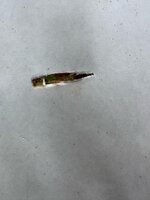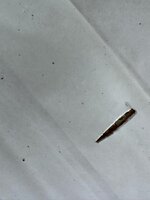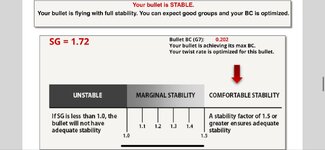I'm stumped. A buddy of mine sent me these results asking if I could answer why, and I can't. I've listened to the podcasts about stability and this seems like an anomaly, so maybe I'm missing something. Hopefully @Formidilosus can chime in with a technical answer.
Specs: Tikka 223 8 twist chopped to 20" and threaded, 77 TMK @ 2780fps. Shot in 40° @ 500' elevation.
He confirmed it is an 8 twist with a cleaning rod. Stability calculator seems good. No evidence of baffle strikes. He said it shot great groups at 500, shot plates out to 700, but at 840 yards 3/4 impacts keyholed the 4'×4' plywood target, with the 4th missing completely. Thoughts?



Specs: Tikka 223 8 twist chopped to 20" and threaded, 77 TMK @ 2780fps. Shot in 40° @ 500' elevation.
He confirmed it is an 8 twist with a cleaning rod. Stability calculator seems good. No evidence of baffle strikes. He said it shot great groups at 500, shot plates out to 700, but at 840 yards 3/4 impacts keyholed the 4'×4' plywood target, with the 4th missing completely. Thoughts?




